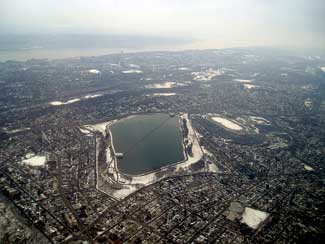
Hillview Reservoir may be capped with concrete and topped with a green roof.

[www.landscapearchitect.com/research/article/10913] in which Yonkers, N.Y. may concrete in the 90-acre Hillview Reservoir and top it with a green roof.
Chad Klever writes:
If the $1.6 billion ?EUR??,,????'?????<
This seems to be one more example of the American epidemic where the solutions are even more catastrophic than the original cause.
If you totaled the amount of toxic chemicals and airborne particulates created by manufacturing, transporting, and pouring that much concrete, you would far exceed the intended benefits of capping the reservoir.
Chad Klever
Manager
RS Wells, LLC
Centennial, Colo.
Re ?EUR??,,????'?????<www.landscapearchitect.com/research/article/10435]
Edward Wallace writes:
Excellent article. Congrats Eric on keeping focused and encouraging others to do the same. Taking your business and your team to the next level is a true test of a professional.
You, my friend , have passed that test with flying colors. See you on the trails of life all over the world.
Edward Wallace
Horticultural Consultant
Midwest landscaping
Long Beach, Calif.
